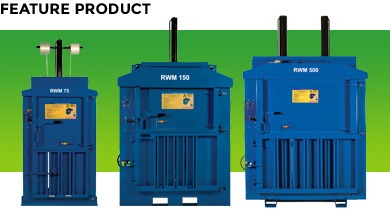As a result of the COVID-19 pandemic, there have been many changes for businesses and consumers over the last 12 months.
And although online shopping is nothing new, there has been a significant increase in digital retailing. Here, Jonathan Oldfield, MD of Riverside Waste Machinery, takes a look at how this trend is affecting the level of carbon emissions…
As a nation, back in March 2020 we were told to ‘stay home, protect the NHS, and save lives’.
So, it came as no surprise that, as a result of our new way of living, people turned to the internet for their deliveries. And, in most cases, ordered far more online than they typically would, to bring entertainment into the home – and combat the monotony of daily life.
Highlighting the surge, Amazon still remains one of the few companies to have greatly benefitted from the pandemic – and resulting lockdowns. The e-commerce giant employed an additional 175,000 warehouse and delivery workers between March and April 2020, just to fulfil customer orders.
However, what impact has this trend had on the environment?
Despite the fact that delivery drivers were one of the only groups of people spotted on the roads for a period of time, CO2 emissions actually saw a decrease during the initial lockdown period – largely as a result of travel restrictions imposed on the nation. This reduction in travel more than offset the rise in carbon due to deliveries.*
But now, as the restrictions are beginning to ease and the end is in sight, will consumer behaviour simply go ‘back to normal’?
This is very doubtful, as although shops will start to reopen, the ease of online purchasing has now become standard behaviour for many. And, when places will once again be able to invite shoppers into their stores, many people may decide against this for a number of reasons – including a fear of large crowds due to spreading of the virus, or simply sticking with their newly formed online habits.
So, what does the increase in packaging actually mean for carbon emissions?
Packaging products – including glass, plastic, and cardboard – all produce levels of CO2 when they are manufactured. So, an increase in deliveries automatically means raised levels of carbon emissions.
There are a number of ways in which retailers can try to help minimise this increase. And this comes back to the ‘three Rs’:
· Reducing the amount of packaging materials used, ensuring smaller items are not placed in overly large containers for instance, to avoid waste.
· Reusing materials, where possible – plastic pallets for transporting items in transit are a great example of this.
· Recycling – recyclable packaging uses less energy to produce and also results in lower levels of pollution.
Taking it back to the consumer too, purchasers can play their part by ensuring that they recycle the packaging, where possible. And, if relevant, they can also select the option to combine several purchases into one delivery, or even use the ‘click and collect’ option. These seemingly small actions all amount into a much greater one, which can help to increase the health of our planet.
One thing’s for sure, we are unlikely to see a vast reduction in online shopping anytime soon. Let’s hope that the retailers adopt a stance to ensure the levels of carbon emissions remain as low as possible, and that purchasers play their part in this too.
* 2020 study by The Carbon Trust.






